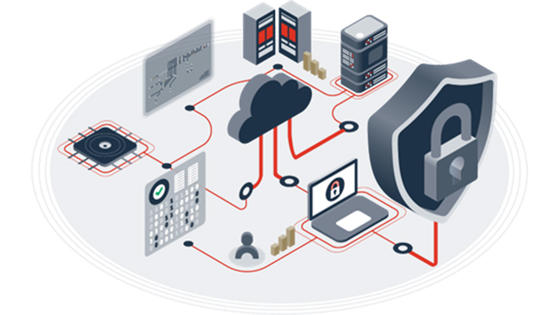
Key Takeaways
- It is essential to understand the importance Addressing Vulnerabilities of staying proactive in cybersecurity.
- They are recognizing common vulnerabilities and their potential impact.
- We are utilizing data and research-backed strategies for maintaining system security.
- We are implementing best practices to safeguard against vulnerabilities.
Introduction to Cybersecurity Vulnerabilities
In today’s digital age, cybersecurity vulnerabilities pose a significant Addressing Vulnerabilities risk to individuals and organizations. These weaknesses in a system can provide an entry point for malicious activities, potentially leading to data breaches, financial loss, and reputational damage. To counter these threats, it is essential to find the latest Fortinet CVEs and stay updated on newly discovered vulnerabilities. Staying informed about the latest vulnerabilities helps IT professionals and organizations prioritize their security measures and promptly address the most critical issues.
Understanding the nature of these vulnerabilities is the first step toward mitigating potential threats. With ongoing technological advancements, hackers’ approaches to exploit systems are continually evolving, necessitating an equally dynamic and proactive cybersecurity strategy. Recognizing the multifaceted nature of cybersecurity threats allows organizations to implement a comprehensive plan that addresses various vectors of attacks.
The Increasing Need for Proactive Measures
As cyber threats become more sophisticated,the need for proactive measures in integrating cyber and physical protection becomes increasingly critical. the necessity for proactive measures in cybersecurity becomes increasingly critical. The traditional reactive approach, where actions are taken only after a breach has occurred, is no longer sufficient. Implementing preemptive strategies can save both time and resources in the long run. Preventative measures enable organizations to act before significant damage occurs, reducing the overall impact of cyber incidents.
For more insights on the importance of proactive cybersecurity, it is worthwhile to consider perspectives from industry experts. For example, an article from CSO Online highlights the importance of adopting a proactive security approach to avoid potential threats. This proactive stance involves continuous monitoring, threat intelligence, and incident and Mobile Threat Intelligence, and incident response planning, enhancing an organization’s ability to fend off sophisticated attacks.
Common Types of Vulnerabilities
Cybersecurity vulnerabilities can stem from various sources. Understanding these common types is crucial for effective mitigation:
- Software Bugs: Flaws in software code that attackers can exploit. These vulnerabilities often arise from human errors during the coding process and can lead to severe security breaches if not promptly addressed.
- Configuration Issues: Misconfigurations of systems or networks that create security gaps. Simple mistakes like open ports or default credentials can lead to unauthorized access and exploitation.
- Outdated Software: Software that is no longer supported by updates can leave systems vulnerable. Cybercriminals often target outdated software
- Human Error refers to user mistakes, like using weak passwords or falling for fraudulent phishing emails. One of the biggest contributing causes to cybersecurity incidents is still human error, which emphasizes the necessity of ongoing education and awareness campaigns.
Recognizing the Vulnerabilities
Recognizing vulnerabilities early can significantly reduce the risk of exploitation. Essential actions include working with reputable QA testing services such as Quality Logic conducting regular vulnerability assessments and monitoring the most recent threats. Organizations that perform comprehensive security audits and use automated tools to scan for vulnerabilities can find and fix vulnerabilities before they are exploited. Regular evaluations offer an essential moment of the security posture, allowing for prompt remediation.
Automated tools and scanning software can provide valuable insights into potential vulnerabilities, but human expertise is essential to interpret these findings and implement necessary changes. Combining automated detection with human analysis creates a robust defense mechanism.
Strategies for Addressing Vulnerabilities
Addressing cybersecurity vulnerabilities requires a multifaceted approach. Here are several key strategies to consider:
- Conduct Regular Security Audits: Periodic audits help identify new vulnerabilities and ensure that existing mitigations are adequate. These audits should be thorough and involve checking all systems, applications, and networks for potential weaknesses.
- Implement Patch Management Systems: Software must be regularly updated to fix known bugs and vulnerabilities. Thanks to automated patch management systems, patches are applied quickly,
- Educate Employees on Cybersecurity Best Practices: Training programs can significantly reduce the risk of human error. Regular cybersecurity training programs help employees recognize phishing attempts and understand the importance of secure passwords.
- Utilize Advanced Threat Detection Tools: Using cutting-edge technologies to identify and neutralize threats instantly can add another degree of protection. Thanks to machine learning and artificial intelligence, these tools swiftly spot odd patterns and possible threats.
Best Practices in Cybersecurity
To safeguard against vulnerabilities, adhering to best practices is paramount:
- Regularly updating all systems and software ensures that known vulnerabilities are patched promptly. A systematic update schedule is crucial to ensure that all critical patches are applied as soon as they become available.
- Using strong, unique passwords: Reduces the risk of unauthorized access. Implementing policies that enforce complex passwords and regular changes can significantly enhance security.
- Enabling two-factor authentication: Adds an extra layer of security for user accounts. Two-factor authentication makes it considerably harder for attackers to gain access, even if they have obtained the password.
- Regular data backup ensures that it can be recovered in case of a breach or other loss.
Staying Updated with the Latest Security Trends
Keeping abreast of the most recent advancements in cybersecurity ensures you are prepared to counter new threats as they emerge. Participate in webinars, forums, and industry newsletter subscriptions to stay informed. Engaging with the cybersecurity community lets you keep current on the latest defenses and threats. Cyber threats are ever-changing, so it’s critical to learn and adapt.
Interacting with cybersecurity experts and discussion boards provides access to current data and peer perspectives, which are highly beneficial in mitigating possible risks. Attending industry conferences and webinars offers additional chances to learn about the most recent technological developments and how to use them for enhanced security.
Conclusion
In conclusion, staying ahead in cybersecurity requires a proactive approach. Following the strategies and best practices outlined above can enhance your cybersecurity posture and protect against potential threats. Regular updates, thorough audits, employee education, and using advanced tools are all integral parts of a robust cybersecurity strategy.
Because cyber threats are dynamic, constant vigilance and adaptation are required. Maintaining a solid defensive posture requires keeping up with the most recent vulnerabilities and mitigation strategies and utilizing the collective knowledge of cybersecurity experts.

